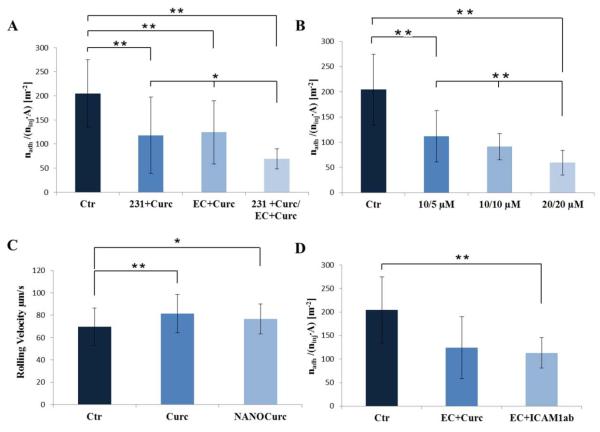Figure.5. Vascular adhesion and rolling velocity of cancer cells on the inflamed endothelium.
A. Adhesion propensity of the MDA-MB-231 cells in the case of no curcumin treatment (Ctr); MDA-MB-231 cells only treated with free Curc (10 μM for 24h) (231+Curc); HUVECs only treated with free Curc (5 μM for 1h) (EC+Cur); MDA-MB-231 cells and HUVECs treated with free Curc (10 μM for 24h; 5 μM for 1h, respectively) (231+Curc/EC+Curc). B. Adhesion propensity of the MDA-MB-231 cells in the case of no curcumin treatment (Ctr); MDA-MB-231 cells and HUVECs treated with NANOCurc (10 μM for 24h; 5 μM for 2h, respectively) (10/5μM); MDA-MB-231 cells and HUVECs treated with NANOCurc (10 μM for 24h; 10 μM for 2h, respectively) (10/10μM); MDA-MB-231 cells and HUVECs treated with NANOCurc (20 μM for 24h; 20 μM for 2h, respectively) (20/20μM). C. Rolling velocity of the MDA-MB-231 cells in the case of no curcumin treatment (Ctr); MDA-MB-231 cells and HUVECs treated with free curcumin (10 μM for 24h, 5 μM for 1h, respectively) (Curc); MDA-MB-231 cells and HUVECs treated with NANOCurc (20 μM for 24h, 20 μM for 2h, respectively) (NANOCurc). D. Adhesion propensity of the MDA-MB-231 cells in the case of no curcumin treatment (Ctr); HUVECs only treated with free curcumin (5 μM for 1h) (EC+Curc); HUVECs incubated with Anti-ICAM-1 antibody (ICAM-1Ab).
In all experiments, HUVECs were stimulated with TNF-α at 25 ng/ml for 6h. The adhesion propensity is quantified as the ratio between the number of firmly adhering cells (nadh), the total number of injected cells (ninj = 106) and the area of the region of interest (A = 0.33×10−6 m2). Data are plotted as mean ± SD. The symbol “ * ” denotes statistically significant difference at p ≤ 0.05, as compared to control (Ctr). The symbol “ ** ” denotes statistically significant difference at p ≤ 0.01, as compared to control (Ctr). (n ≥ 10 for each tested condition).

